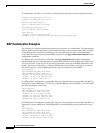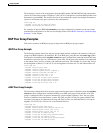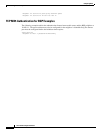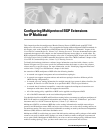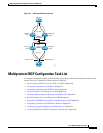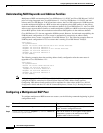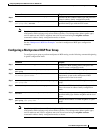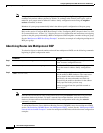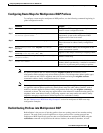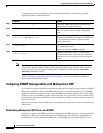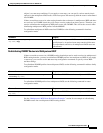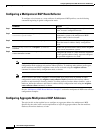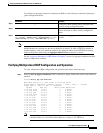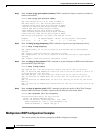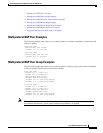
Configuring Multiprotocol BGP Extensions for IP Multicast
Multiprotocol BGP Configuration Task List
IPC-352
Cisco IOS IP Configuration Guide
Note Peer groups that are defined in router configuration mode using the neighbor peer-group command
exchange only unicast address prefixes by default. To exchange other address prefix types, such as
multicast, peer groups must be defined in address family configuration mode using the neighbor
activate command, as shown.
Members of a peer group automatically inherit the address prefix configuration of the peer group.
Refer to the section “Configure BGP Peer Groups” of the “Configuring BGP” chapter in the Cisco IOS
IP Command Reference, Volume 2 of 3: Routing Protocols
for information and instructions on assigning
options to the peer group and making a BGP or multiprotocol BGP neighbor a member of the peer group.
See the “Multiprotocol BGP Peer Group Examples” section for an example of configuring multiprotocol
BGP peer groups.
Advertising Routes into Multiprotocol BGP
To advertise (inject) a network number and mask into multiprotocol BGP, use the following commands
beginning in global configuration mode:
Note Networks that are defined in router configuration mode using the network command are injected into
the unicast database by default. To inject a network into another database, such as the multicast
database, the network must be defined in address family configuration mode using the network
command, as shown.
To redistribute Distance Vector Multicast Routing Protocol (DVMRP) routes into multiprotocol BGP,
see the “Redistributing DVMRP Routes into Multiprotocol BGP” section. See the “Multiprotocol BGP
Network Advertisement Examples” section for multiprotocol BGP network advertisement configuration
examples.
Command Purpose
Step 1
Router(config)# router bgp autonomous-system
Configures a BGP routing process and places the
router in router configuration mode.
Step 2
Router(config-router)# address-family ipv4 multicast
Specifies the IP Version 4 address family type and
places the router in address family configuration
mode.
Step 3
Router(config-router-af)# network network-number
[mask network-mask]
Advertises (injects) this network number and mask
into the multicast BGP database. (The routes must
first be found in the unicast forwarding table.)
Specifically, the network number and mask are
injected into the multicast database for the address
family specified in the previous step.
Routes are tagged from the specified network as
“local origin.”



